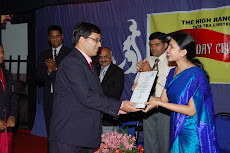Workshop Handout - By C. Radhakrishnan
TEN CHARACTERISTICS:
1. Clarity of Explanations and Directions.
2. Establishing a task-oriented classroom climate.
3. Making use of variety of learning activities.
4. Establishing and maintaining momentum and pace for the lesson.
5. Encouraging students’ participation and getting every one involved.
6. Monitoring students’ progress and attending quickly to students needs.
7. Delivering a well structured and well organised lesson.
8. Providing students with positive and constructive feedback.
9. Ensuring coverage of the learning objective.
10. Making good use of questioning techniques.
Self Evaluation Questionnaire for Teachers
This assessment will help you determine your teaching style.
1. Do you find your teaching style:
• may lead to an inflexibility for managing the concerns of students.
• may cause students to feel inadequate when they can't follow your example.
• works well for most students but is very time consuming.
• may leave students feeling anxious about their ability to meet your expectations.
2. Which of the following do you like to use for evaluating student learning?
• teacher made tests.
• student self-assessment tests.
• performance based criteria.
• problem solving and critical thinking.
3. When planning lessons, you prefer to have:
• whole class lessons.
• role playing.
• peer tutoring.
• Brain storming.
4. When you teach face to face, your instructional time includes:
• lectures.
• demonstrations.
• films/videos.
• class discussion/brainstorming.
5. You believe in teaching by:
• being the source of information.
• personal example and establishing a prototype.
• emphasizing student-teacher interactions.
• being a resource person as needed by the student.
6. One of your goals is to have your student:
• function well within the learning structures needed.
• observe and emulate what was observed.
• able to work independently and under his/her own initiative.
• able to work in an autonomous manner.
7. One advantage of your teaching style is that it:
• focuses on clear expectations.
• emphasizes direct observation.
• allows students personal flexibility.
• helps students see themselves as independent learners.
8. Assignments given to students are usually based on:
• your personal preferences or on specific instructional models.
• a sequence of steps leading to mastery but which you organize.
• a student portfolio or learning log which has a self assessment component.
• problem solving based on research of course material.
9. Your teaching style develops a rhythm which contains:
• four steps: content selection, presentation/reception, reflection, application.
• three steps: selection, skill development, mastery performance.
• five steps: creating awareness, collecting data, choosing innovation, implementing a plan, reviewing results.
• twelve steps: ranging from pose and reflect on a problem, skill development exercises to interim evaluation, learner responses and development of solutions.
You can always email me for clarification or assistance.
smartteacher@rediffmail.com
THANK YOU FOR YOUR THOUGHTS, REACTIONS & SUGGESTIONS.
CONTENTS
- Awards (1)
- Book Reviews (19)
- Career Guidance (1)
- Classroom Management (5)
- Growth AS A Teacher (1)
- Links to our other blogs (1)
- My Articles (20)
- Our Philosophy of Teaching (3)
- Our Resource Collection (1)
- POSTER DESIGN (2)
- SWOT Analysis (2)
- Worksheets (4)
- Workshop Handout - Horizons (6)




